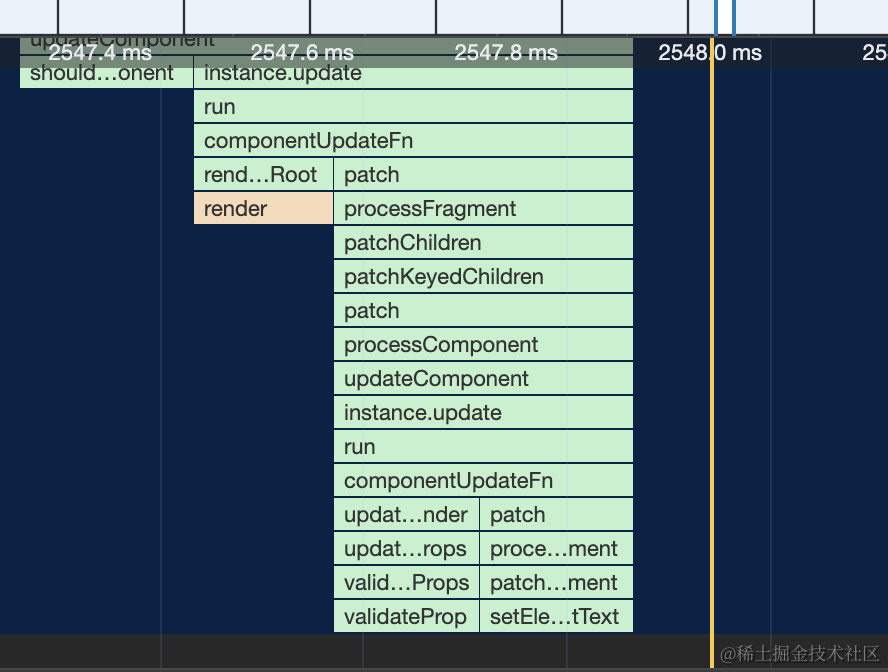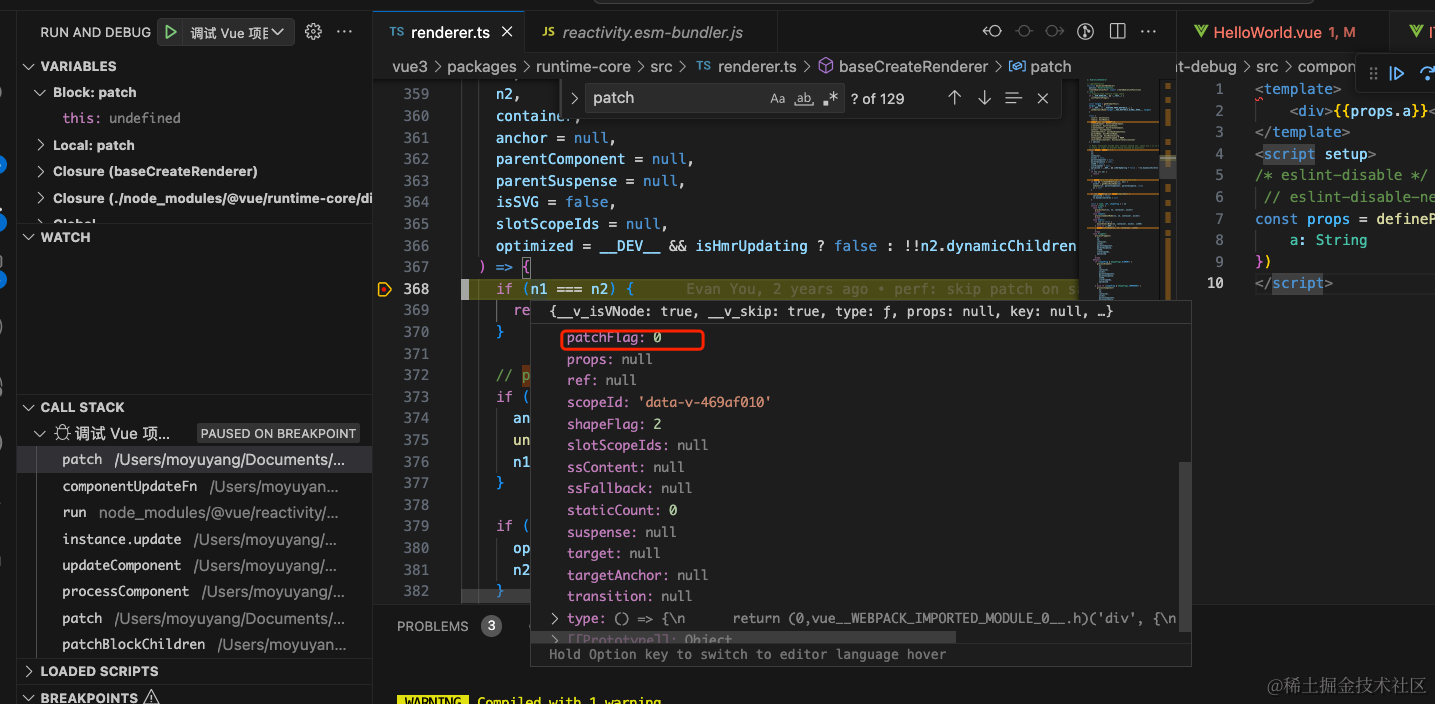首先我们先建立两个最小 demo,通过 perfomance 和 debug 断点手段去分析
<template>
<div>
<button @click="handleChange"></button>
<component :is="HelloWorld" :a="a"></component>
</div>
</template>
<script setup>
import { ref } from 'vue';
import HelloWorld from './components/HelloWorld.vue'
const a = ref('1')
const handleChange = () => {
a.value = Math.random().toString()
}
</script>
情况 1, h 函数
<template>
<component :is="renderFunc"></component>
</template>
<script setup>
import { h } from 'vue';
/* eslint-disable */
const props = defineProps({
a: String
})
const renderFunc = () => {
return h('div', {innerHTML: props.a})
}
</script>
情况 2, 组件
<template>
<ITest :a="props.a"></ITest>
</template>
<script setup> import Itest from './ITest.vue'
/* eslint-disable */
const props = defineProps({
a: String
}) </script>
<template>
<div>{{props.a}}</div>
</template>
<script setup> /* eslint-disable */
// eslint-disable-next-line
const props = defineProps({
a: String
}) </script>
通过点击按钮触发 a 值变化查看渲染流程区别

情况 1

情况 2
我们可以观察到情况 1 在第一次 patch 的时候 renderfunc 这个子组件是没有触发到内部的 patch,而是通过 updateProps 再度调用 renderfunc 进入内部,从而内部 patch 的。

部分源码路径
这里我们可以观察到 renderfunc 这个组件的 patchflag 为 0,shapeflag 为 2(patch 时这两个 key 启到判断作用),进入 processComponent ⇒ updateComponent,因为新的 component 为空所以直接赋值旧的就结束了。第一次的 patch 就这样结束。又由于 h 里面使用 props 会触发收集所以在 updateprops 的时候就会调用 renderfunc 这个函数,从而触发 patch。